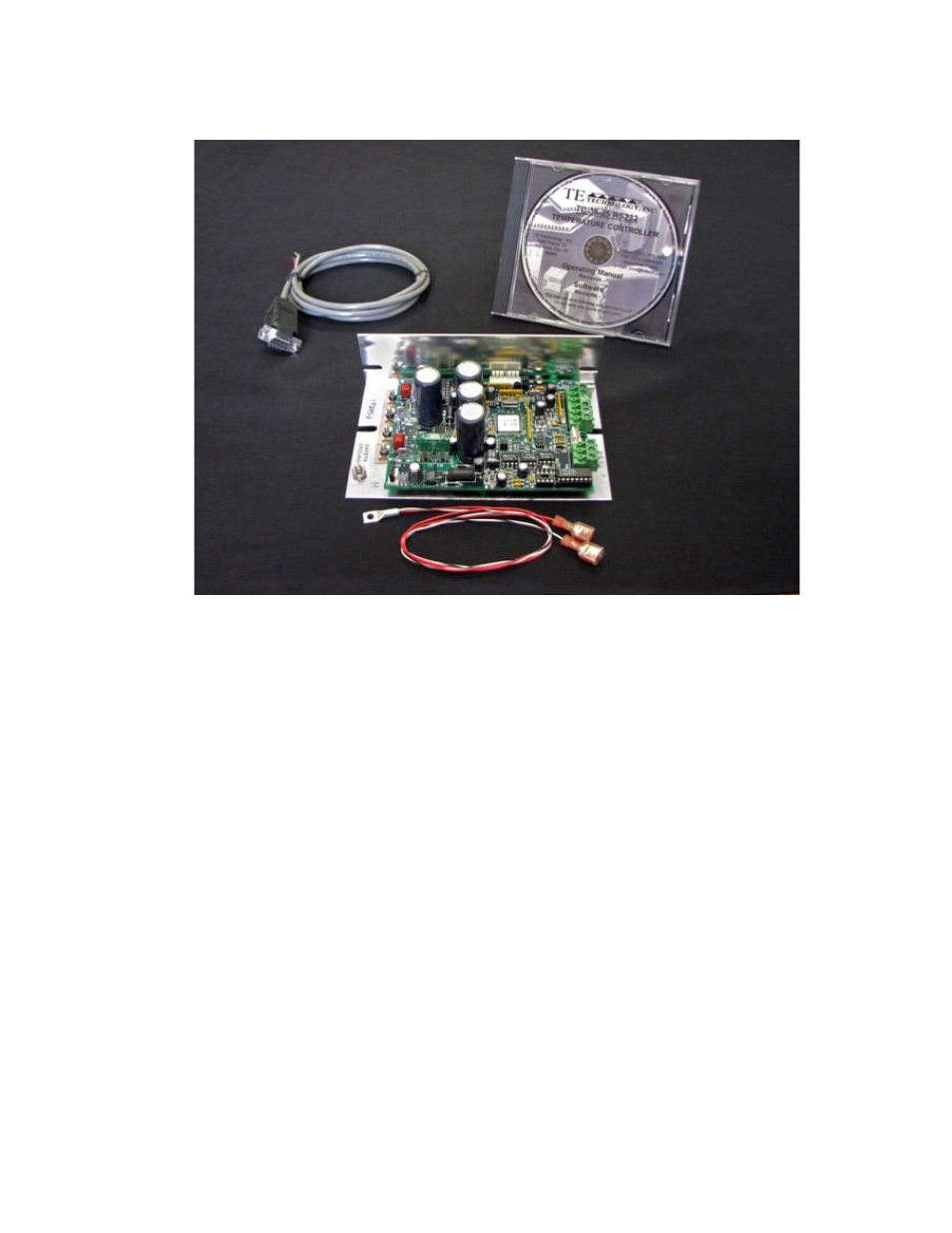Features – TE Technology TC-36-25-RS232 User Manual
Page 8

Features
The TC-36-25 RS232 provides bi-directional (heating and cooling) temperature control for thermoelectric devices.
Resistive heaters can also be controlled. An H-bridge configuration is used for the power output stage. The output stage
is made from solid-state N-channel MOSFETs (no relays or mechanical components are used). These transistors are
highly efficient and allow for the bi-directional flow of current through the thermoelectric coolers. Their high efficiency
reduces the waste heat generated by the controller and allows for a compact design.
This controller is programmable via the RS232 communication port for direct interface with a compatible computer. Field
selectable parameters or data acquisition in a half duplex mode can be performed. The supplied software is compatible
with Windows 95/98/XP/NT. The software provides a graphical user interface for setting control parameters and receiving
feedback from the temperature sensor. However, the command set is also provided so that qualified personnel can use
the controller as an embedded control, or they can create a custom program interface using LabVIEW, for example. The
software can also be used to instruct the TC-36-25 RS232 to save the desired control parameters to the controller’s non-
volatile memory. This allows the controller to be disconnected from the computer and operated as a stand-alone
controller. When operating as a stand-alone controller, the controller can be set to always control to the stored set point
or it can be set up to accept a proportional signal to vary the set point as required.
Mechanically, the controller’s printed circuit board is mounted to a metal bracket that is suitable for either horizontal or
vertical orientation. The controller can operate in ambient temperatures from 0 °C to 60 °C without generally requiring
additional heat sinking. The controller is intended to be used in locations where the controller can be protected by a
secondary enclosure or other means of protection.
8
